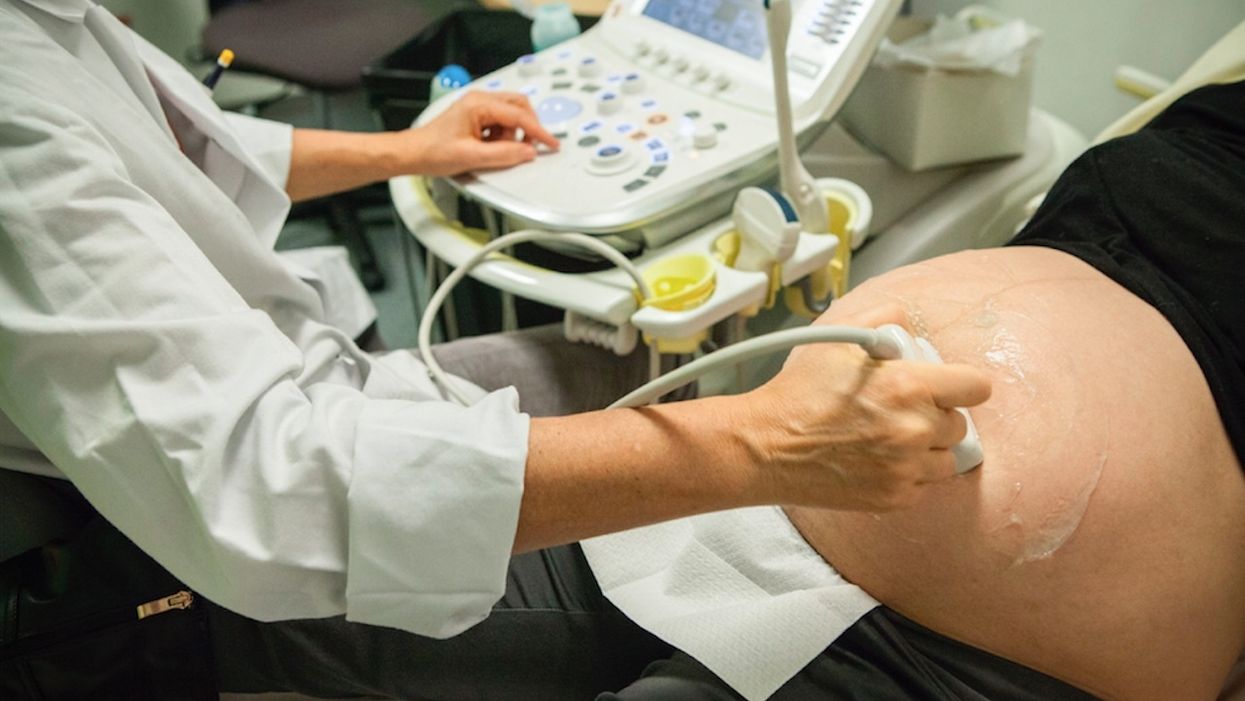
Photo credit: BSIP/UIG via Getty Images

'Moments later, the man delivered a stillborn baby'
A piece in Wednesday's New England Journal of Medicine deals with an emergency room patient who complained of severe abdominal pain — but the nurse didn't consider it an emergency, recognizing the patient as an obese male who wasn't taking his blood pressure medicine anymore, The Associated Press reported.
But as the AP notes in "Blurred lines: A pregnant man's tragedy tests gender notions," the patient was a transgender man — a biological female who identifies as male.
More from the outlet:
The 32-year-old patient told the nurse he was transgender when he arrived at the emergency room and his electronic medical record listed him as male. He hadn't had a period in several years and had been taking testosterone, a hormone that has masculinizing effects and can decrease ovulation and menstruation. But he quit taking the hormone and blood pressure medication after he lost insurance.
A home pregnancy test was positive and he said he had "peed himself" — a possible sign of ruptured membranes and labor. A nurse ordered a pregnancy test but considered him stable and his problems non-urgent.
Several hours later, a doctor evaluated him and the hospital test confirmed pregnancy. An ultrasound showed unclear signs of fetal heart activity, and an exam revealed that part of the umbilical cord had slipped into the birth canal. Doctors prepared to do an emergency cesarean delivery, but in the operating room no fetal heartbeat was heard. Moments later, the man delivered a stillborn baby.
Lead author of the NEJM article — Dr. Daphna Stroumsa of the University of Michigan, Ann Arbor — said the unnamed patient "was rightly classified as a man" in medical records and appeared masculine, the AP reported.
"But that classification threw us off from considering his actual medical needs," Stroumsa told the outlet, adding that the result was "an example of what happens to transgender people interacting with the health care system."
Women who show up at hospitals with similar symptoms "would almost surely have been triaged and evaluated more urgently for pregnancy-related problems," the NEJM article authors wrote, the AP said.
"It's a very upsetting incident, it's a tragic outcome," Dr. Tamara Wexler, a hormone specialist at NYU Langone Medical Center, told the outlet.
"Medical training should include exposure to transgender patients" so health workers are better equipped to meet their needs, Wexler added to the AP, adding that "a lot of doctors who are practicing didn't have that in their training" but can still learn from such patients now.
Nic Rider, a transgender health specialist and psychologist at the University of Minnesota, told the outlet "there are implicit biases that need to be addressed" and that the prevalence of male/female gender templates "doesn't mean that we just throw out critical thinking or think about how humans are diverse."
Gillian Branstetter, a spokeswoman for the National Center for Transgender Equality, added to the AP that transgender people often have problems getting gender-specific health care such as cervical cancer screening, birth control, and prostate cancer screenings.
"The consequences can be so dire, as this case shows," Branstetter also told the outlet.